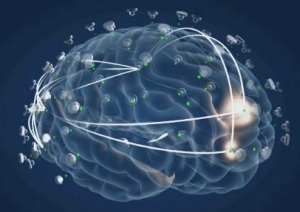Every third person suffers from a brain-related disorder – be it Alzheimer’s, Parkinson, attention deficiency hyperactivity disorder (ADHD), chronic pain or depression. But there is no definite diagnosis to document the effects of treatment, which is still based lot on guesswork, resulting in low success rates at high costs.
An Israeli company – EIMindA, has developed a technology, which promises in clinical studies of brain-related disorders. The company claims the non-invasive brain network activation (BNA) technology helps in diagnostics in a way no other existing technology can do.
The procedure is simple and painless. Patients sit at a computer for 15 to 30 minutes, performing a special task many times, while the device maps network activation points in the brain. The repetition shows, the device to sift out brain activity unrelated to the task, such as thinking about what to eat for lunch. The result is a three-dimensional image of nerve cell connectivity and synchronization that is highly sensitive, specific and reproducible.
The tool is sensitive enough to show subtle differences in the severity of the condition from one day to another, says Dr. Eli Zangvil, EIMindA’s strategic advisory for business development. It can also optimize drug dosing by monitoring the changes in brain network activities as the drug takes effect.
EIMindA hopes the technology would be available to doctors within five years to help them pinpoint the stage of disease and the course of treatment.
“To do that, we must collect a lot of data,” says Dr. Zangvil. “To say this person has a certain disease or condition, I have to be able to compare their pattern to a normal brain pattern of a person of the same age and gender.”
The company is currently gathering data through experiments at hospitals of Michigan and Pittsburgh universities spending millions, focusing on mild traumatic brain injury (concussion) and ADHD.
“We hope we’ll get FDA approval by the end of 2012 and be in the US market for monitoring and decision-making for the treatment of concussion — especially sports-related concussion — in 2013,” said Dr. Zangvil.
Why concussion? It’s long been known that boxers develop chronic brain conditions after taking many blows to the head. But newer research shows that someone who gets hit in the head just a few times — not even hard enough to knock him out — is at great risk of developing irreversible brain damage, depression and Parkinson’s.
As of now, doctors rely on information from patient questionnaires to assess these injuries because CT and MRI scans can’t detect mild trauma. “We believe our technology offers an objective way to measure the situation and be useful as a tool for making decisions, like whether the player can go back on the field. This is a concern for every mother whose child plays contact sports,” says Zangvil.
In much the same way, clinical trials are proving the tool’s value for objectively diagnosing ADHD, which affects up to one in 20 US children.
Diagnosis today is based on a subjective behavioral and clinical evaluation, with a high rate of misdiagnosis and unnecessary drug treatment. BNA mapping would simplify diagnosis by comparing the patient’s scan to a normal and an ADHD profile. It would also play a role in treatment decisions and monitoring.
ElMindA is collaborating with some of the world’s biggest pharma companies, and negotiating partnerships with others, to fund research onto how the technology can help in diagnosis and treatment evaluation not only for ADHD but also for Parkinson’s disease, depression, migraine, chronic pain and addictions.
BNA will also be helpful in making more accurate dosage recommendations and in identifying patients who are best suited to test new drugs.
View original Indian Science Journal publication at: http://indiansciencejournal.wordpress.com/2012/02/08/232/








 Israeli New Shekel Exchange Rate
Israeli New Shekel Exchange Rate